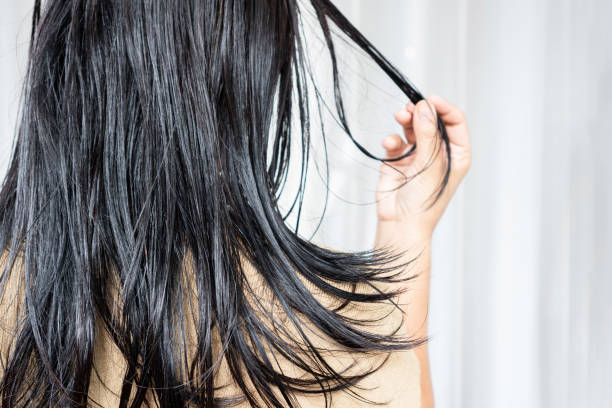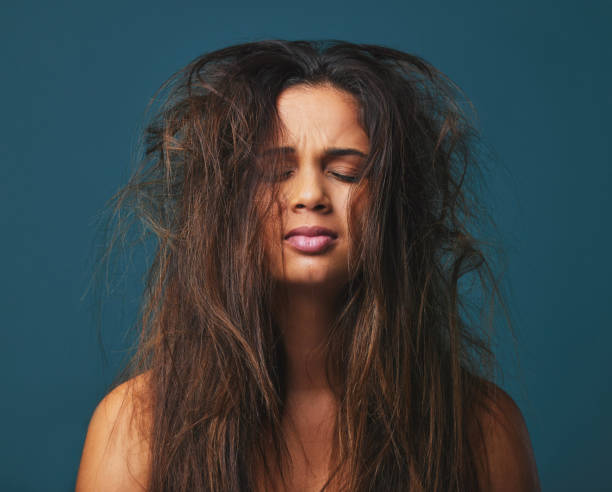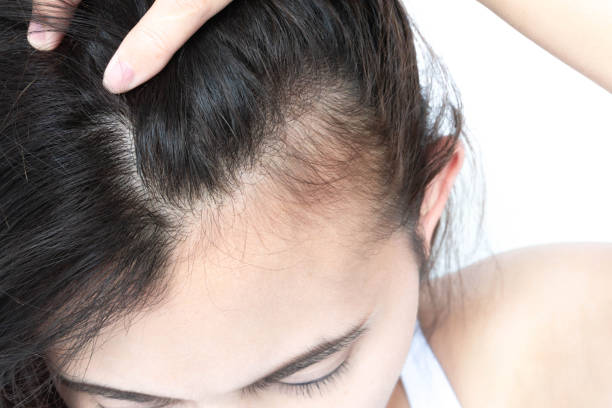Tips For Right Shampoo and Conditioner According Your Hair Type

Hair care is an important part of any beauty routine, and with countless products on the market, selecting the right shampoo and conditioner can be overwhelming. Everyone’s hair is different, and their unique characteristics require customized care. This guide aims to help you choose the right products based on your hair type – whether it’s oily, dry, fine or coarse – so you can maintain healthy, vibrant hair every day.
1. Why Hair Type Matters
When it comes to hair care, one solution doesn’t fit all. The wrong shampoo or conditioner can cause problems like buildup, greasiness, or lack of moisture. Using products specifically designed for your hair type not only boosts your hair’s health but also makes styling easier and helps prevent damage. For example, a person with oily hair will have different needs than someone with dry, thick hair, which means they need products with unique formulations.
Choosing the right shampoo and conditioner ensures that your hair gets the hydration, protection, and cleansing it needs. Whether your hair is thin and lifeless or coarse and unruly, the right hair care routine can do wonders.

2. Identifying your hair type Before you start selecting products, it’s important to understand your hair type. Hair can generally be classified into the following groups: oily, dry, fine, and thick. Let’s take a more about.
Oily hair
People with oily hair often struggle with excessive sebum production. Sebum, the natural oil produced by the scalp, is essential for keeping hair moisturized and protected. However, excess oil production can make hair greasy, flat, and difficult to manage.

Signs of oily hair include:
- Hair appears greasy immediately after washing (within a day or two).
- The scalp feels oily to the touch.
- Hair looks limp or less thick.
Dry hair
Dry hair does not have enough moisture and may feel dry or brittle to the touch. This can be caused by environmental factors, such as excessive sun exposure or using heat-styling tools, but it can also be the result of using harsh hair products.

Signs of dry hair include:
- Hair feels dry or straw-like.
- Hair breaks or splits easily.
- The scalp may feel dry, flaky or irritated.
Thin hair
Thin hair refers to hair that has a small diameter. While thin hair can be straight, curly or wavy, its fragile nature makes it prone to damage and breakage. People with thin hair often look for products that make hair appear thicker without weighing it down.

Signs of thin hair include:
- Hair feels soft but may not have the volume it needs.
- Hair can easily come down by heavy products.
- Hair may break easily or have trouble retaining curls.
Thick hair
Thick hair is characterized by a greater density of hair strands, which can make it appear thicker and stronger. However, thick hair is more prone to tangling and tangling, and can sometimes look unmanageable if the wrong products are used.

Signs of thick hair include:
- Hair feels full and dense.
- Hair tangles easily.
- It is prone to curling, especially under conditions.
3. Understanding shampoo and conditioner ingredients
In order to choose the best products for your hair type, it is important to understand which ingredients are best for different needs. Here’s a quick rundown:
Ingredients for oily hair

- Clarifying agents: Ingredients like salicylic acid, tea tree oil, and witch hazel help remove excess oil from the scalp without stripping away essential moisture.
- Sulfates: Although sulfates are often debated, they can be effective in controlling excess oil. If you need a deep cleanse, look for shampoos with mild sulfate formulas.
- Lightweight hydrators: For conditioners, look for lightweight moisturizers like aloe vera or chamomile that won’t weigh down your hair.
Ingredients for dry hair

- Hydrating agents: Ingredients like shea butter, argan oil, and coconut oil moisturize deeply and help retain hydration.
- Glycerin: Helps lock in moisture at the roots and keeps hair hydrated throughout the day.
- Proteins: Hydrolyzed silk or keratin proteins strengthen weak, brittle hair.
Ingredients for fine hair

- Volumizing agents: Look for ingredients like biotin, collagen or panthenol that add volume and strength to fine hair.
- Lightweight oils: Oils like jojoba or grapeseed can volumize thin hair without weighing it down
- Avoid heavy silicones: Heavy silicone-based products can flatten thin hair.
Ingredients for thick hair

- Deep conditioners: Ingredients like avocado oil, olive oil, and argan oil provide deep nourishment for thick hair, helping to control frizz and boost smoothness.
- Proteins and humectants: These help lock in moisture while providing structural support for stronger, thicker hair.
- Anti-frizz agents: Look for silicones or other smoothing ingredients to control unruly hair.
4. Shampoo and conditioner recommendations by hair type
Best products for oily hair
For oily hair, focus on products that balance oil production without overly drying out your scalp.

Shampoo:
- Clarifying shampoo: Look for shampoos labeled as “clarifying” or “oil control.” Ingredients like tea tree oil, charcoal, or salicylic acid are excellent at absorbing oil and purifying the scalp.
Conditioner:
- Lightweight conditioner: opt for an oil-free, lightweight conditioner with ingredients like aloe vera or chamomile. Avoid heavy, creamy formulas that can weigh down your hair and make it greasy faster.
Pro tips:
- Rinse your hair with lukewarm water, as hot water can stimulate oil production.
- Consider cleansing your hair twice a week with a gentle clarifying shampoo.
Best products for dry hair
Dry hair needs products rich in moisturizing ingredients to restore and lock in moisture.

Shampoo:
- Moisturizing shampoo: Look for shampoos with rich oils like argan oil, jojoba oil, or coconut oil. Look for products labeled “hydrating” or “nourishing” to add extra moisture.
Conditioner:
- Deep conditioner: Use a deep conditioner with ingredients like shea butter or avocado oil. Consider a leave-in conditioner or hair mask once a week for an intense moisture boost.
Pro tips:
- Avoid washing your hair every day; instead, wash 2-3 times a week to maintain your hair’s natural oils.
- Stay away from shampoos with harsh sulfates, as they can strip moisture from your hair.
Best products for thin hair
Thin hair requires lightweight, volumizing products that don’t make it feel heavy.

Shampoo:
- Volumizing shampoo: Choose shampoos labeled “volumizing” or “lightweight” with ingredients like biotin, rice protein, or collagen that help thicken thin hair.
Conditioner:
Lightweight conditioner: Use a lightweight conditioner designed for thin hair. Avoid rich or heavy products that can make your hair fall flat. Look for ingredients like aloe or bamboo extract for gentle hydration.
Pro tips:
- Use volumizing mousses or lightweight styling products to enhance body and bounce.
- Limit the use of heat-styling tools as thin hair can be easily damaged.
Best products for thick hair
Thick hair benefits from rich, moisturizing products that provide manageability and reduce frizz.

Shampoo:
Hydrating shampoo: Choose shampoos that deeply nourish the scalp and hair with ingredients like coconut oil, argan oil, or shea butter.
Conditioner:
Moisturizing conditioners: Look for thick, creamy conditioners that contain oils and proteins that deeply nourish and reduce frizz. Leave-in conditioners or hair masks can do wonders for hydration.
Pro tips:
- Use a wide-toothed comb to gently detangle wet hair and prevent breakage.
- Include a hair serum or oil in your routine to help lock in moisture and combat frizz.
5. FAQs
How often should I shampoo and condition based on my hair type?

- Oily hair: You need take shampoo daily or every second day to control oil.
- Dry hair: Shampoo less frequently, 2-3 times a week, to maintain natural oils.
- Thin hair: Shampoo every other day or every three days to avoid buildup.
- Thick hair: Shampoo 2-3 times a week to avoid stripping out natural oils.
Should I always use conditioner, even if my hair is oily?

Yes! Conditioner helps balance the moisture in your hair and protects it from environmental damage. For oily hair, use a light conditioner only on the ends.
Can i mix different brands of shampoo and conditioner in one time?

Absolutely! The main thing is to find products that work for your specific hair type, and they don’t have to come from the same brand.
6. Final Thoughts: Embracing the Natural Beauty of Your Hair
Understanding your hair type and choosing the right products to suit its unique needs





[…] More Post […]